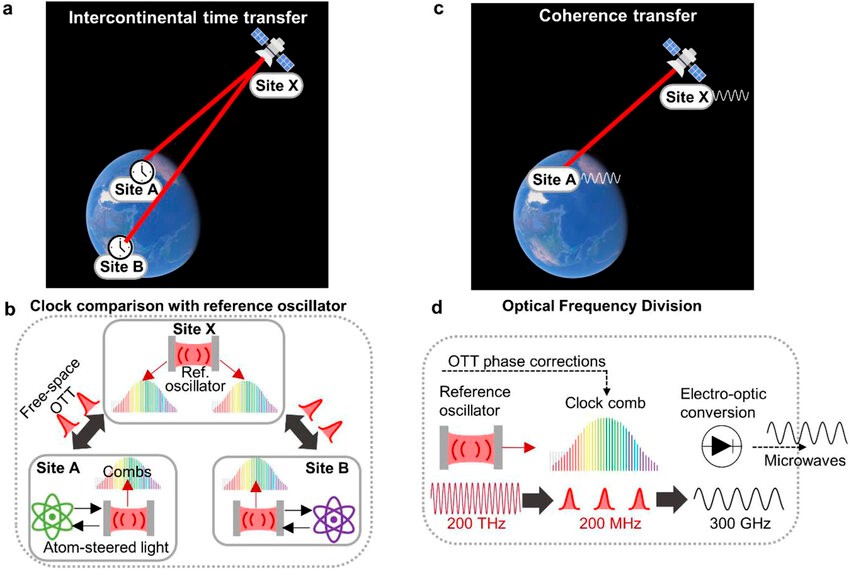PREVIOUS
Intercontinental optical clock comparison
July 14 , 2025
16 hrs 0 min
35
0
- Researchers from around the world have completed the world’s largest, head-to-head comparison of clocks in history.
- It involved 10 optical clocks based on five atoms: strontium-87 (Sr), ytterbium-171 (Yb), charged ytterbium-171 ions in two states (Yb⁺ E2 and Yb⁺ E3), charged strontium-88 (Sr⁺), and indium-115 ions (In⁺).
- The clocks were located at six national metrology institutes in Finland, France, Germany, Italy, the U.K., and Japan.
- The duration of a single second is currently defined by the caesium (Cs) atomic clocks.
- Lasers ‘count’ the radiation emitted by Cs atoms in these devices to measure one second, give or take a few billionths.
- Scientists expect optical clocks will replace Cs atomic clocks as the world’s new time standard around 2030.
- In the early 20th century, the definition of a second was one-86,400th of a mean solar day.
- In 1956, one second became equal to one-31,556,925.9747th of the time the earth took to go once around the sun from January 0, 1900.
- The Cs atomic clock loses only one second every 300 million years.

Leave a Reply
Your Comment is awaiting moderation.


